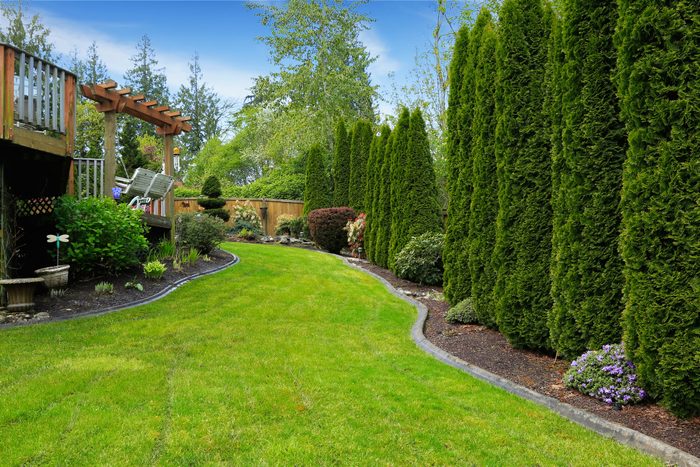How to Save Your Grass From Summer Heat

Summer heat can wreak havoc on your lawn. Here's how to keep your grass growing and healthy in the long run!
For many homeowners, a bright green lawn is part and parcel of the American dream. From cookouts with friends or a game of touch football with the kids, a soft and luxurious green lawn enhances our enjoyment of outdoor living spaces. But what do you do when that lawn is threatened by extreme heat?
There are three main types of heat a lawn must resist: normal seasonal heat, unexpected heat waves and heat associated with a drought. We’ll look at solutions and strategies for each of these threats.
On This Page
Combatting Seasonal Heat
Every region has its seasonal temperature swings. That’s why it’s so important to seed your lawn with a species of grass that’s right for your climate. If your lawn seems to struggle every summer, consider overseeding a more heat-resistant variety. Even if your lawn is healthy, help it fight the heat by mowing frequently, taking only a little bit off at a time, no more than one-third of the grass blades’ height. Avoid mowing during peak temperatures, and use a sharp blade to ensure clean cuts.
Also be aware of the wear and tear that your lawn endures. If you identify a bald spot, treat it and seed it as soon as possible. It’s far easier to deal with these issues when they’re on a small scale. New grass growth provides shade and helps prevent weeds from gaining a foothold in those bald patches.
Unexpected Heat Waves
While seasonal heat is cyclical, an unexpected heat wave poses a different threat, and you’ll need to take more action than normal. Your lawn will likely require additional watering during a heat wave, but always water strategically. Do it early in the morning, giving the lawn plenty of time to absorb that moisture before the high temperatures trigger evaporation.
If your lawn turns brown, don’t panic. “Cool season grass,” common in northern regions and at higher elevations, tends to go dormant in response to high heat, but will quickly rebound once temperatures return to normal. Some homeowners can’t resist the temptation to bring the lawn back to life, and end up over-watering or fertilizing. This carries another set of problems, because the salt content in many fertilizers can potentially “burn” the lawn or soak up precious moisture. It’s best to wait for that heat wave to pass before you break out the fertilizer, herbicides or other chemicals.
Heat and Drought
Particularly common in the South and Southwest, the one-two punch of extreme heat and drought can be devastating for lawns. In these areas, drought-resistant grass seed is essential. These grasses often go dormant during dry spells, or have deeper roots and more extensive rhizomes to help survive periods of drought.
Drought conditions often bring watering restrictions. If you can water, do so deeply but infrequently. When the water penetrates further into the ground, it’s slower to evaporate and encourages deeper root growth, which it turns helps protect the grass during the next heat wave. Mow rarely during a drought, allowing the longer grass to shade the ground and retain moisture.


